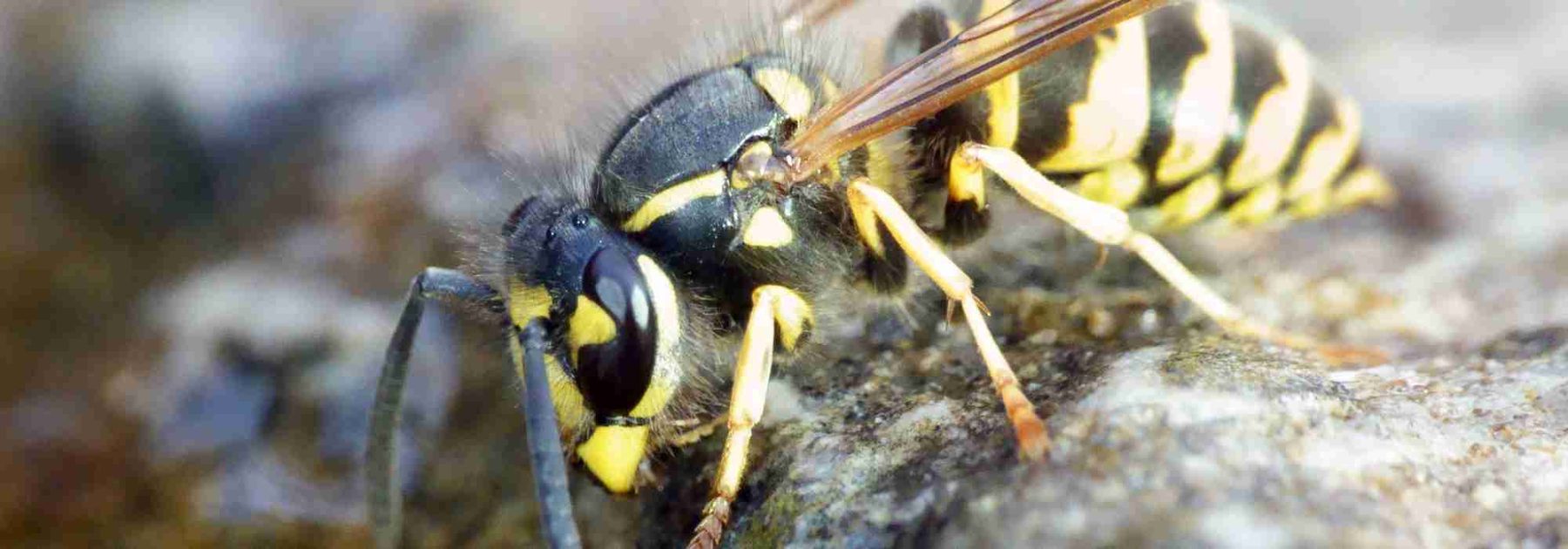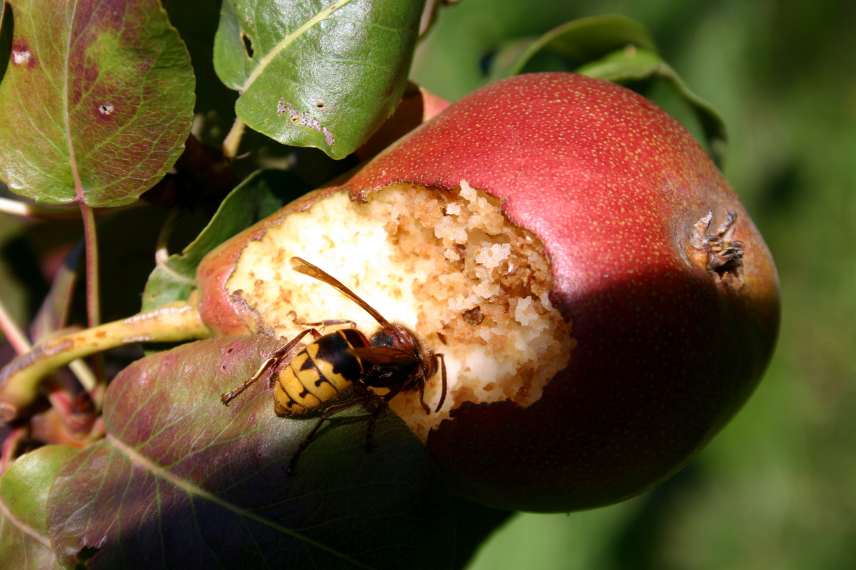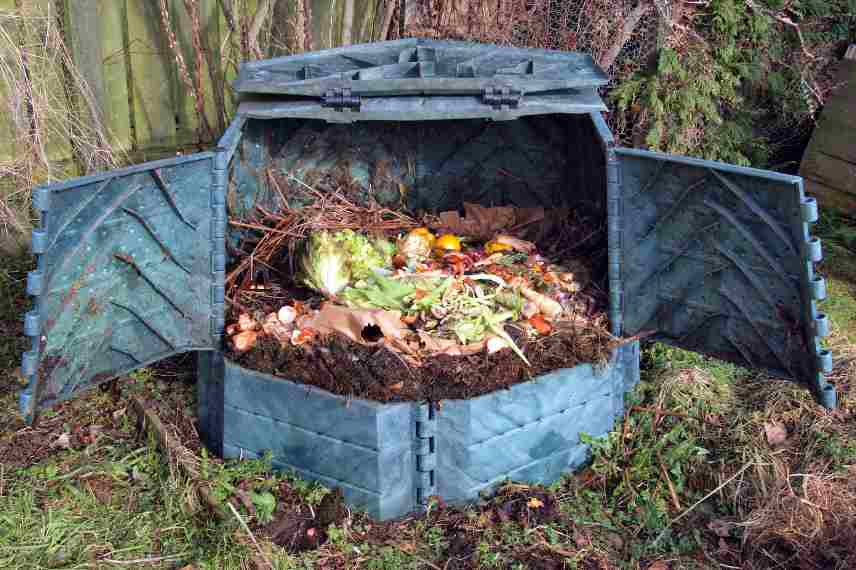
Wasps in the Compost: Why? How to Deter Them? (Note: The translation maintains the original HTML structure while adapting the content for a British English gardening audience. Botanical terms remain unchanged, and the tone is kept informative yet accessible for amateur and professional gardeners alike.)
Tips and tricks to prevent wasps from nesting in your compost bin
Contents
During your last visit to the garden, as usual, a trip to the compost bin is essential to dispose of fruit and vegetable peelings from your latest meal. And there, surprise – as you toss the waste, a few wasps fly out. This is a relatively common occurrence in summer. However, while compost attracts many beneficial insects, wasps are decidedly more concerning. Indeed, if disturbed, they can become aggressive—especially if they’ve built their nest within the compost itself. The question arises: should we keep these wasps in the name of ecological balance? Or should we get rid of them? And if so, how can we do it as naturally as possible to preserve the compost?
Discover our respectful and perfectly natural solutions to deter wasps while maintaining a healthy, thriving compost.
Why do wasps like compost?
First of all, it may be useful to clarify that the term “wasp” actually encompasses multiple species. But the one most commonly found around and in compost bins is Vespula vulgaris, the common wasp, recognisable by its yellow body striped with black and its slender waist. Not to be confused with European and Asian hornets, which are significantly larger and distinguished by their lack of… a wasp waist!
Compost, Highly Attractive to Wasps
Often considered pests, wasps are in fact social insects that visit our gardens or dining tables solely to feed themselves and their larvae with sugars and proteins. These nutritional needs intensify as the colony grows. Worker wasps go in search of proteins to feed the larvae and sugars for their own energy. This well-established feeding behaviour explains their presence in resource-rich locations like our well-stocked tables on the terrace or the compost heap!
Because a compost bin is an open buffet for wasps. Fruit and vegetable peelings or rotten fruit irresistibly attract wasps. Compost also emits some warmth, a factor that can appeal to wasps. Add to this the presence of other invertebrate insects like flies and larvae, which serve as a secondary food source for some species. In short, the compost becomes a small ecosystem that wasps know how to exploit perfectly.

Wasps feed on sugar and proteins
Practices That Increase Attractiveness
Certain practices unintentionally encourage wasp proliferation in compost. Adding too much “green” material (peelings, damaged fruit) without enough “browns” (dead leaves, cardboard, straw) unbalances the heap and speeds up fermentation. If, on top of that, the composter is poorly closed or has overly large openings, this facilitates access and potential nesting. Sometimes, simply placing it in full sun or near a water source can also increase the site’s attractiveness.
What are the risks associated with wasps in compost?
While the presence of a few wasps in the compost heap is often harmless, it can quickly become a nuisance, or even dangerous if a nest is established. Wasps can easily build a nest within the compost itself.
Nuisance for the gardener and their family
By late summer, when the colony grows and food becomes scarce, worker wasps often become more nervous—and therefore more aggressive. A sudden movement, an overly vigorous turning of the compost, and a sting becomes likely. For those with allergies, the risk is obviously more serious.
Insects that aren’t always unwanted
Wasps, however, play a significant role in the garden’s natural balance. They are predators that regulate populations of flies, midges, larvae, and other insects, some of which can harm crops. Certain species of wasps even contribute to pollination. Eliminating them systematically could disrupt the ecological chain of the vegetable garden. The real challenge, then, is finding a balance: avoiding nuisance without excluding an insect that also has its place in the garden’s biodiversity.

The wasp is also a garden ally
This is why, if there is truly no risk, it is possible to keep the nest or these wasps in the compost. However, your compost heap will be off-limits until the colony dies out, between October and November. You can always start another heap elsewhere. Similarly, to avoid any risk, establish a safety perimeter of at least ten metres around the compost, for example with barrier tape. And don’t forget to educate those around you!
How to keep wasps away from compost without causing imbalance?
Wanting to keep these wasps away is completely legitimate. To avoid using chemical products that could disrupt the balance of the compost, some solutions are worth considering.
Proper compost management
The best way to limit the presence of wasps is to avoid making your compost appealing to them. This requires rigorous compost management:
- Balanced inputs: maintain the right ratio between green (wet) and brown (dry) materials to prevent overly attractive fermentations. A compost that’s too dry often attracts wasps.
- Bury attractive waste: very ripe fruit, juicy peelings, and food scraps should be buried in the centre of the pile, never left on the surface. You can cover them with dry materials like pre-dried grass clippings or a very thin layer of soil.
- Avoid animal proteins: in a standard compost, it’s best to avoid meat, fish, or dairy products, which also attract rats and wasps. For these, prefer a Bokashi or worm composter.
- Cover and close carefully: a composter with a well-fitted lid limits intrusions.

Closed compost bins are less accessible to wasps
Arranging the space around the compost
The location of the compost bin can also make a big difference:
- Avoid overly sunny spots, as they increase the compost’s heat and make it more inviting.
- Plant repellent plants around it: lavender, lemongrass, peppermint, or tansy have natural deterrent properties.
- Create a buffer zone: place the compost at a safe distance from high-traffic areas to avoid unpleasant surprises.
Natural solutions to deter wasps
When wasps are already present but pose no immediate danger, several gentle methods can help keep them away:
- Essential oils: a few drops of lemon eucalyptus, clove, or rose geranium oil on a cloth near the bin can act as a repellent.
- Homemade wasp traps: using a cut bottle with syrup or sweet beer as bait. Use sparingly to avoid affecting non-target insects.
- Insect netting: place it over the pile in summer to limit access without suffocating the compost.
What if a nest has settled in?
Sometimes, wasps don’t just visit the compost bin… they move in. Naturally, their presence can become bothersome, especially around children or allergic individuals.
If you feel capable of doing so, it’s possible to flood the nest with a garden hose. But you’ll need to take all necessary precautions. This means wearing a special combination and acting in the evening or even at night, when the wasps’ comings and goings have ceased. Using water will damage the nest and deter the wasps from re-establishing themselves.
To minimise risks, we rather advise contacting a Certibiocide-certified professional, an obligatory certification for handling professional-use insecticidal products. The simplest solution is to contact your local town hall.
Alternatively, you can wait until winter. Nests are abandoned by autumn, so you can safely remove it and secure the composter before the following spring.
- Subscribe!
- Contents

































Comments